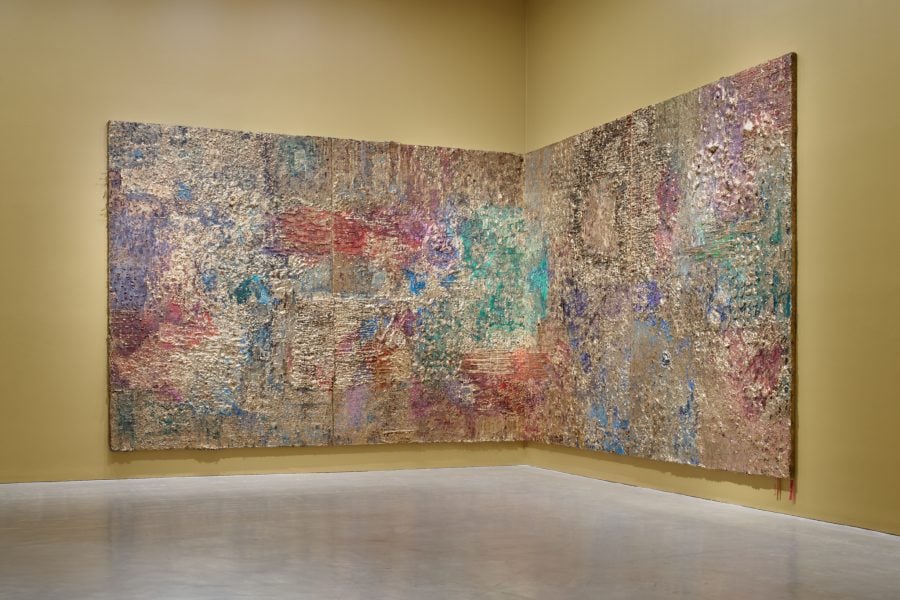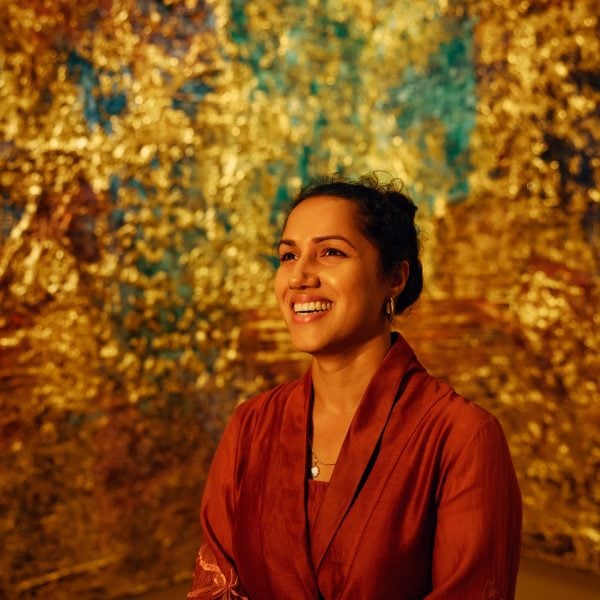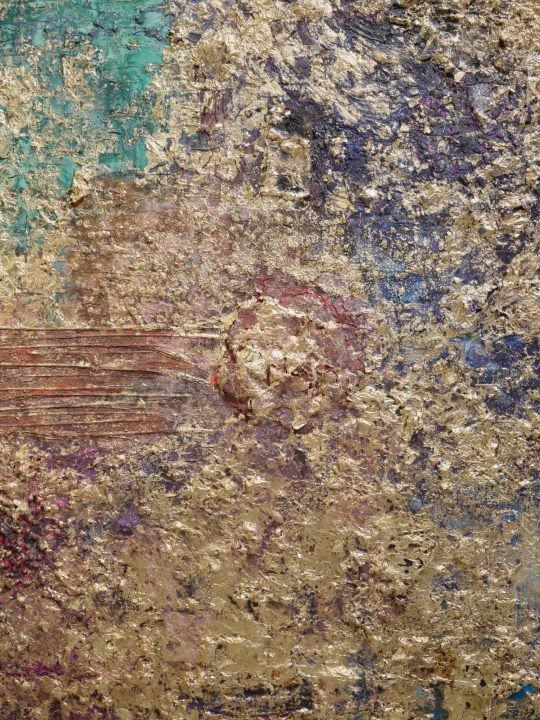Museum of Contemporary Art
The illusion of your history, 2023
gold, gold leaf, wax, cotton wicks, human hair, wire, plastic, cow dung, chunni fabric, cotton, Rangoli pigment, Holi pigment, plasticine, coconut broom grass, synthetic polymer paint, grains, copper leaf, coir rope, leather, wire, cardboard, plaster, impasto, black lotus seeds, sindoor, turmeric, tar
Commissioned by the Biennale of Sydney with generous assistance from Create NSW and the Australian Government through Creative Australia, its principal arts investment and advisory body
Courtesy the artist and Roslyn Oxley9 Gallery, Sydney
Kirtika Kain’s art combines elements of sculpture, experimental printmaking and painting. Embodying a rich dialogue between heritage, memory and identity, Kain’s practice invites a new perspective on the history and culture of Dalits, a social group that has been historically marginalised in Hindu caste society. The artist’s chosen mediums often have deep links to rituals that were restricted to higher-caste Hindus. By bringing together traditional materials such as tar, pigments and gold with contemporary mediums, Kain draws attention to this history of social division.
The illusion of your history is described by Kain as ‘encapsulating the vastness and dimensionality of Dalit experiences, by presenting a tapestry that resonates with Dalit literary and musical traditions.’ Epic in scale and materially complex, the work celebrates this significant 3000-year history, challenging attempts to suppress or erase vital cultural legacies.


